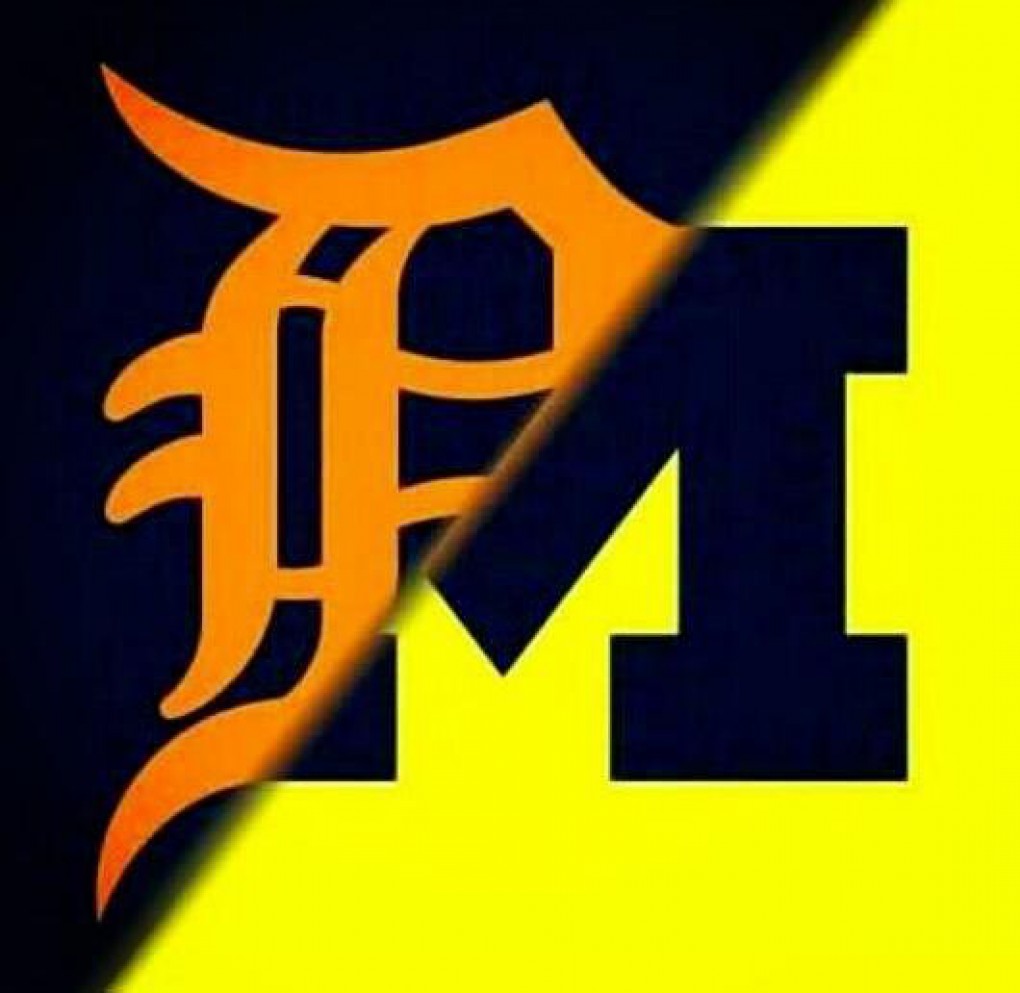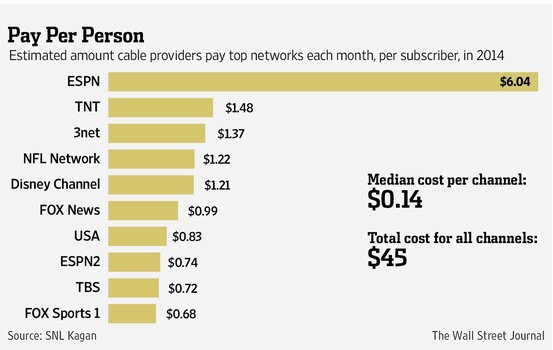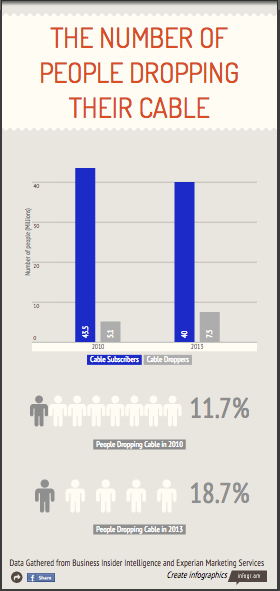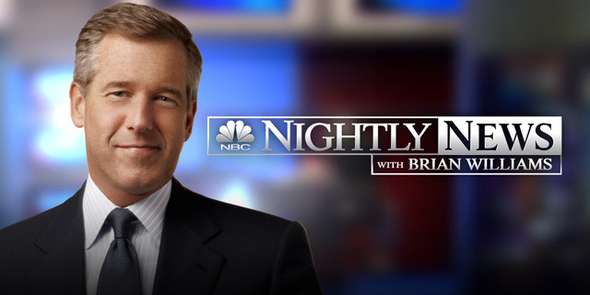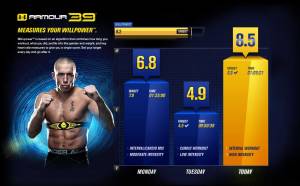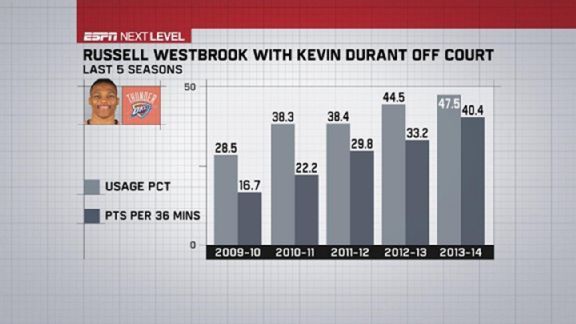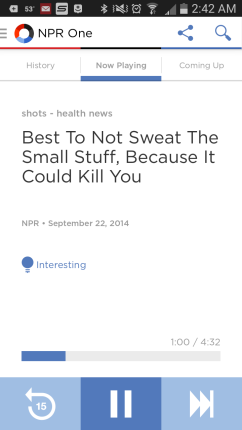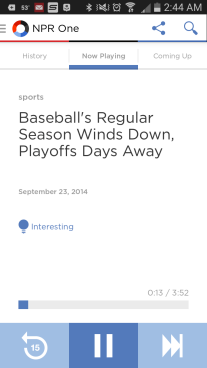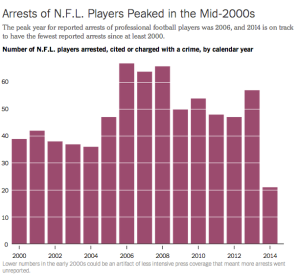The Power of Sports
Have you ever stopped to look at you cable bill? I don’t mean to look at the overall price, but to actually look and examine what each channel costs you? Well, if you did that you might find a few interesting takeaways regarding price. Obviously the most expensive channels you have are going to be any of the premium channel subscriptions such as HBO, Starz or Showtime. Those are complete subscription only channels that do not use advertisers and therefore are not offered with a basic cable package, which naturally means that they will cost more. However, if you pay attention to the basic cable channels, you will see that the most expensive channel you pay for is ESPN.
As you can see, ESPN charges cable providers $4.56 more per subscriber than the next most expensive channel. At first this may not seem like a large amount, but when you realize that combined, Comcast and Time Warner Cable – the top two cable providers in the United States – service over 33 million people, you realize that ESPN is several million dollars more expensive than other channel. However that is not all. If you look at the top ten most expensive channels above you might not realize that 6 of these channels are sports channels in some kind of way. TNT regularly broadcasts NBA regular season and playoff games. TBS airs the first few rounds of the MLB Playoffs. Fox Sports 1 is Fox’s attempt at countering ESPN with their own 24/7 sports network. The NFL Network is a channel that is solely dedicated to the National Football League. The fact that these channels comprise some of the most expensive channels is a testament to how popular, and how powerful, sports are in the television market.
Cutting the Cord
However, there is something that my disrupt the profitability of these networks, and that is the internet. We now live in a world where people no long have to rely on the television to watch their favorite shows. With streaming sites such as Netflix, HuluPlus, and Amazon Prime, people are starting to let go of their cable and simply watch their TV digitally online.
Now, many people think that sports stations are immune to this type of issue because sports are one of the few events that you need to experience live. And while this is true for the actual live games that take place throughout the season, this is actually not the case for most of what these networks provide. Many of these networks offer live content during prime time hours and on weekends, but aside from that, much of what you see are recap and analysis shows. This, like much of the news content found on HuluPlus, is something that can be viewed at any time. However, the big networks have not truly capitalized on a service that provides this. The closest thing to a service like this provided by the networks is ESPN’s Watch ESPN app, which only offers what is currently airing on ESPN at the time. This means that the market is still kind of open for an on-demand sports content.
120 Sports – The All Digital Sports Network
Enter 120 Sports. Unlike what you find on ESPN or Fox, which rely on broadcast television for their content, 120 Sports is an all digital network. It runs out of Harper studio in Chicago and generates over 10 hours of its own content every day. The talent for the program is professional and include former ESPN SportCenter host Michael Kim, former NBA All Star Antoine Walker, and 2-time Super Bowl Winner Bryant McFadden. However, what makes this different than all other sports networks is that none of its content airs on TV. Instead, all of its content goes directly online to its website and its mobile applications, and you are able to watch the content without needing to provide a cable provider. What makes it even more interesting is that all of the content that 120 Sports generates are around 2 minutes long.
The network is backed by both Time Inc. and Sports Illustrated, so it is has a decently stable money backing. As for how it makes money, the app has static ads placed throughout its timeline. It also uses the advertising method of having 30 second ads play before the videos load. Although it doesn’t have a ton of sponsors yet, these two sources of money should provide enough money to keep the application going for the next few years.
What you’ll find when you use the app is that it operates very similarly to a social media site, which is something that the companies president, Jason Coyle, is trying to achieve with the network. It operates all 3 of the big social media platforms, and after going through the app, you can really see the social media influence with both the design and the functionality of the application.
The one thing I wonder is if people would really use it. It is still a very new network as the app went live last July. The only people that I know who know about are people who were present during the Michigan Sports Business Conference, but it has 10,000+ downloads on the Google Play Market. So I asked another sports fan what his initial thoughts on the network and its application were.
The next few years are going to be interesting in regards to the network and where it is going. As more people move away from cable to go to more interesting to see if what was thought as one remaining strength of cable television will be effected. One thing’s for sure, if any of the networks try to take their content directly online, they may find themselves in a bit of trouble, as 120 Sports has already beaten them to the punch.
